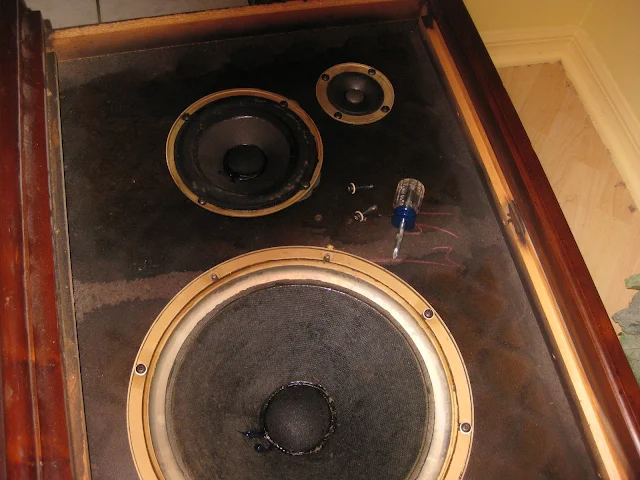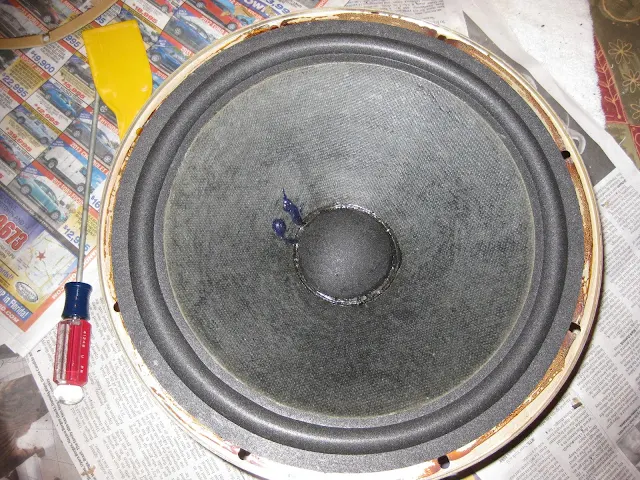1968 ElectroVoice "Aries".
PPlease do ot bee afraid to do this, because I approached it with little knowledge. Once you figure out the grill cover comes off by 4 screws at the UNDERSIDE FRONT of the cabinet, you can easily remove the drivers.
In my case, I only did the 12" woofers, because everything else looked fine.
I made a little "roll" of non-shrink plumbers putty to seat them.
nce completed, I hooked them up to a rebuilt Pioneer SX 1010, and at 2 watts can feel that bass in your chest.
I am very fond of paper cone drivers, and find that a 12", 6", and 3", components are my favorite.
No gimmic 1,000 watt speakers for me. I always make sure the SX 1010 volume is turned to 0 when finished listening. 2-3 watts is more than enough power, and you tube guys will be knocked out.
Rarely do I see these units, and if you get thee chance to buy a pair, do it.
Some of you will frown because I didn't fool with the crossover network, but if it ain't broke, don't fix it. Sound magnificent. The woofer has a 6.5 lb. alnico magnet, and everything built when people took pride in their craftsmanship.

















